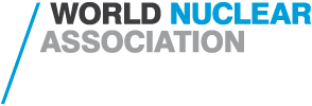The International Atomic Energy Agency (IAEA) team of senior safety experts concluded an Integrated Regulatory Review Service (IRRS) mission to Kenya from 20 to 29 October 2025. The mission was carried out at the request of the Government of Kenya and was hosted by the Kenya Nuclear Regulatory Authority (KNRA).
Kenya does not currently operate any nuclear installations but is considering the introduction of nuclear power to help meet its growing energy demand, and uses radiation sources across medical, research and industrial sectors - it signed up to the Net Zero Nuclear goal to triple nuclear energy capacity at last year's COP29 climate conference. It is preparing to establish its first nuclear research reactor, which will serve as a key facility for education, training and research. The IAEA reviewed Kenya's nuclear infrastructure development for its planned research reactor programme last year.
The IRRS team reviewed Kenya's governmental, legal and regulatory framework for nuclear and radiation safety against IAEA safety standards. It also conducted interviews and discussions with KNRA staff and observed regulatory inspections at several facilities, including Kenya's Central Radioactive Waste Processing Facility, an industrial radiography facility and in the radiotherapy, nuclear medicine and radiology departments at Kenyatta University Teaching, Referral and Research Hospital.
The team noted KNRA's proactive approach to safety, and highlighted its dedicated inspection campaigns and analysis of outcomes as a good performance.
It also made some suggestions and recommendations:
Establishment of a national policy and strategy for safety consistent with IAEA safety standards;
Provision of sufficient resources to carry out regulatory functions and responsibilities for all facilities and activities that use radiation sources;
Application of a graded approach in regulatory functions; and
Development and implementation of a management system for the regulatory body.
The team also encouraged the government to "complete and promulgate the draft regulations for effective and consistent implementation of the legal and regulatory framework".
"The IRRS mission raises awareness about Kenya's continuous work to enhance regulatory effectiveness," said Daniel Collins, Acting Regional Administrator in the United States Nuclear Regulatory Commission, who led the IRRS team. "Ministries and agencies involved in the regulatory activities show commitment to implementing the IAEA safety standards, which serve as the benchmark for the IRRS reviews."
"Protecting members of the public and the environment from the harmful effects of radiation is our top priority," said James Keter Chumba, Director General of KNRA. "KNRA is fully committed to upholding the highest standards of nuclear and radiation safety.''
The final mission report, including recommendations and suggestions to further strengthen Kenya's regulatory framework, will be made publicly available by the Government of Kenya.

_13101.jpg)



_23621.jpg)

_63865.jpg)
_18570.jpg)





